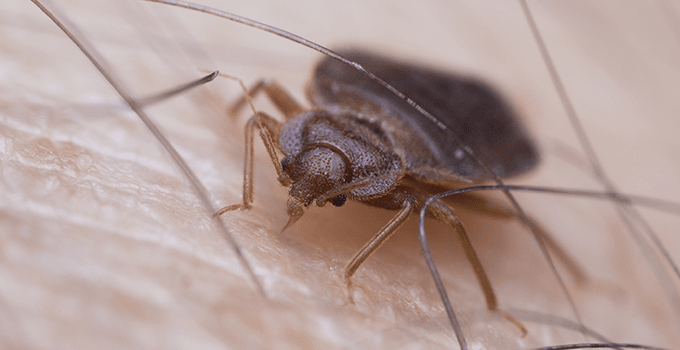What Do Bed Bug Bites Look Like?
The topic of bug bites is an expansive one. There are a lot of bugs that bite us, and many of those bites have similar traits. To make matters worse, there are some cases where we think we have bites and they aren’t bites at all. Some rashes can look like bug bites. So, we’re going to break this article down into two parts. The first will be the anatomy of a bed bug bite. It will cover what they are likely to look like, and how they compare to other bug bites. In the second part we’ll fine tune things and tell you what you can do to know for sure that you’re getting bitten by bed bugs.
Anatomy Of A Bed Bug Bite
- Bed bug bites tend to be a hard welt. If you have lots of puffy welts, those are more likely mosquito bites. But, like all of the points on this list, this depends on your skin type.
- Bed bug bites have a rash around them. This rash can be slight if you were bitten by immature nymphs. It can also be slight if this is your first bite incident. Bite wounds caused by bed bugs tend to become more severe over time. This rash may encompass several bites. But it should never be mistaken for the bullseye rash caused by a tick with the Lyme disease-causing bacteria Borrelia burgdorferi. Bed bug bites have a rash that is similar to a mosquito bite.
- Bed bug bites are itchy, so they may have a scab in the center. But this is a trait that is more typical of flea bites. If you’re getting lots of bites on your feet, ankles, and lower legs, and those bites have scabs in the center, you probably have flea bites.
- Bed bugs will never have a rotted center or a blister. If you’re seeing necrosis in the center of your bite wounds, they are more likely to be spider bites.
- Bed bug bites are not random. When several insects bite you one time, like fire ants, mosquitoes, gnats, chiggers, and more, those bites will appear random on your skin. Bed bugs feed multiple times in an evening–often three times. Entomologists jokingly refer to these as breakfast, lunch, and dinner. Those entomologists are such a hoot. So, bed bug bites will look like they follow a path on your body.
- Bed bug bites are more likely to be numerous. You are not likely to be bitten by a single bed bug. They will come out to feed in a group. A few dozen bites is not uncommon. Bed bug bites will also feel like they happened all of a sudden. You’re not going to get a bite here and there over the course of several days.
- Bed bug bites can take time to puff up. Don’t be fooled. Bites can grow worse over the course of several hours.
Other Evidence Of Bed Bug Bites
While the above characteristics will help you rule some things out, you’re probably going to have to look for additional evidence to make sure bed bugs are to blame for your bites. Check your mattress seams, box spring seams and bottom, bed frame, headboard, baseboards, outlet covers, and stitching on upholstered furniture for signs of bed bugs. You’ll be looking for tiny black droppings, black patches, shed insect skins, tiny white eggs, and blood stains. Keep in mind that blood stains will look red if they are fresh, but most often they will appear brown or light brown. This is because bites are often found a day or two after the bite event and the blood has had time to dry.
You may also see these bugs when you do your inspection. While you may be familiar with the flat, oval, rust-colored adult bugs that are often displayed in the news, it is important to understand that immature nymphs can look different. Bed bugs start off a pale white color and go from tan to rusty brown as they pass from one developmental stage to the next. They will also appear redder, and more bloated, if they have had a recent blood meal.
If you’re getting bitten by bugs or you’re seeing evidence of bed bugs in your home, call Schendel Pest Services. We’ll help you figure out what bug is biting you, and help you get those bugs out of your home–no matter what they are. Life is better without biting pests around. Period.








